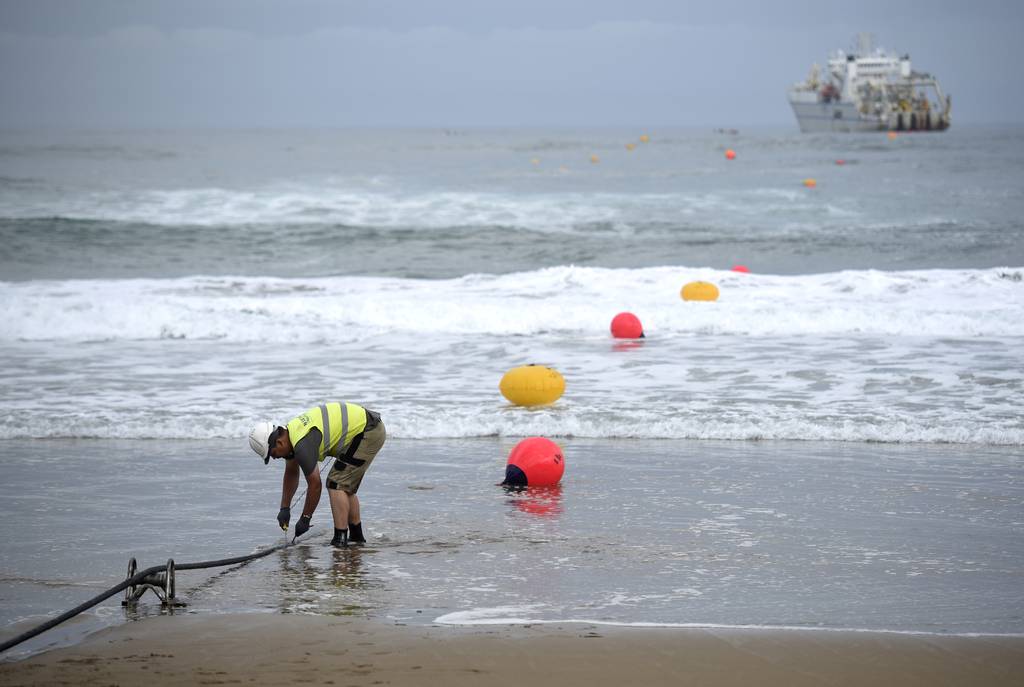ROME — In the near future, undersea naval drones patrolling crucial internet cables and gas pipelines may be able to stop off at charging stations on the seabed to top up their battery and drop off data, letting them stay submerged for months.
The concept is one of a range of ideas Italy is mulling for inclusion in a new EU-backed scheme to protect vulnerable undersea infrastructure – a pressing issue following the mysterious attack on the Nord Stream gas pipeline in the Baltic Sea in 2022.
“We envisage underwater stations on the seabed that are able to recharge batteries, change configurations and download data collected by the unmanned vehicles,” said Italian Navy commander Alessandro Consoli.
The idea is one of a number presented by Italian firms to the Italian Navy which in turn shared them at a meeting it held with other European navies in June as Italy takes charge of a new project in EU’s Permanent Structured Cooperation, known as PESCO.
The project launched in May, known as Critical Seabed Infrastructure Protection, teams Italy with Germany, Spain, France, Portugal and Sweden.
Bulgaria and Finland have observer status on the program and Ireland said this month it would like to join them.
It was on one of 11 new projects added in May to the PESCO roster, which is designed to match up EU members which each other on schemes to share the financing and development work of new defense capabilities.
The seabed recharging station plan is the brainchild of Italian oil and gas infrastructure firm Saipem, which operates its own drones and is testing “garages” to charge them.
As an alternative to bringing drones to the surface, the solution saves time and resources, and Saipem is planning to keep its drones underwater for 12 month in trials and sees no limits to the depth it can position stations.
In a current operation in Norway, the firm’s drones are monitoring undersea oil and gas extraction and using another company’s station at a depth of 400 meters to recharge and extract data from the drones.
The station, a metal framework which the drones can slot into, is connected to the surface by cables which act as a conduit for power and data.
A second initiative discussed at the June meeting involves turning undersea cables from potential victims of sabotage into vast sensors that can keep an eye on underwater traffic and spot saboteurs.
Consoli said the concept is based on analyzing the “phase delay in the signal transiting through fiber optic cables which is altered by acoustic signals in the water around the cable.”
Research underway in Europe suggests the technique can be used to register movement in the water up to 150 kilometers from a cable.
After the meeting, at which the Navy set out its vision for the future of undersea security and Italian firms gave their briefings, the national partners will meet again in September to offer their views on the proposals as well as offering their own, before the PESCO project coalesces around definite initiatives.
The EU said in May the “harmonization” of requirements would run until next year, with “a possible agreement on a common procurement foreseen in 2028.”
Consoli said setting up European industrial consortia to push concepts was on the agenda.
“The intention is to create synergies and implement solutions at lower costs,” he said, adding, “We have got the ball rolling by proposing these ideas and we expect partners to pitch theirs.”
Apart from Saipem, other Italian firms involved are Leonardo, Fincantieri, Intermarine, Elettronica, Graaltech and Wsense.
“The underwater dimension is now seen by the Italian Navy as a fifth physical operational domain, besides air, land, maritime and space,” said Consoli. “The Nord Stream incident clearly demonstrated how fragile the offshore supply energy system can be.”
Tom Kington is the Italy correspondent for Defense News.








